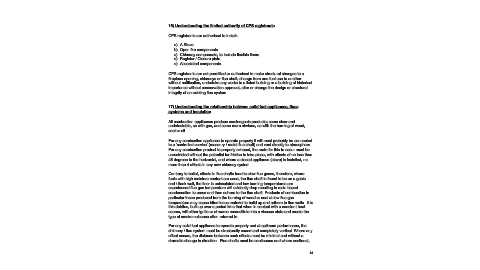Page 66 - Domestic Smoke Nuisance and Emissions Final_Neat
P. 66
16) Understanding the limited authority of CPS registrants
CPS registrants are authorised to install:
a) A Stove.
b) Open fire components.
c) Chimney components, to include flexible liners.
d) Register / Closure plate.
e) Associated components.
CPS registrants are not permitted or authorised to make structural changes to a
fireplace opening, chimneys or flue shaft, change from one fuel use to another
without notification, undertake any works to a listed building or a building of historical
importance without conservation approval, alter or change the design or structural
integrity of an existing flue system.
17) Understanding the relationship between solid fuel appliances, flues
systems and insulation
All combustion appliances produce carcinogenic products; some clear and
undetectable, as with gas, and some more obvious, as with the burning of wood,
coal or oil.
For any combustion appliance to operate properly it will most probably be connected
to a ‘controlled service’ (masonry / metal flue shaft) and vent directly to atmosphere.
For any combustion product to properly exhaust, the route for this to occur must be
unrestricted without the potential for friction to take place, with offsets of no less than
45 degrees to the horizontal, and where a closed appliance (stove) is installed, no
more than 4 offsets in any new chimney system.
Contrary to belief, offsets in flue shafts tend to slow flue gases, therefore, where
fuels with high moisture content are used, the flue shaft is found to be on a gable
end / flank wall, the liner is uninsulated and low burning temperatures are
experienced flue gas temperature will evidently drop resulting in resin based
condensation to occur and then adhere to the flue shaft. Products of combustion in
particular those produced from the burning of wood or coal at low flue gas
temperature may cause bituminous material to build up and adhere to flue walls. It is
this detritus, built up over a period time that when in contact with a constant heat
source, will either ignite or at worse reconstitute into a viscous state and create the
type of smoke nuisance often referred to.
For any solid fuel appliance to operate properly and at optimum performance, the
chimney / flue system must be structurally sound and completely vertical. Where any
offset occurs, the distance between such offsets must be minimal and without a
dramatic change in direction. Flue shafts must be continuous and where sectional,
14

